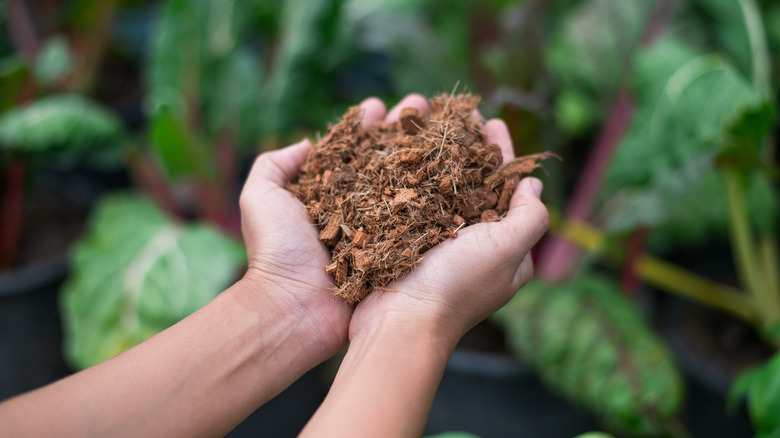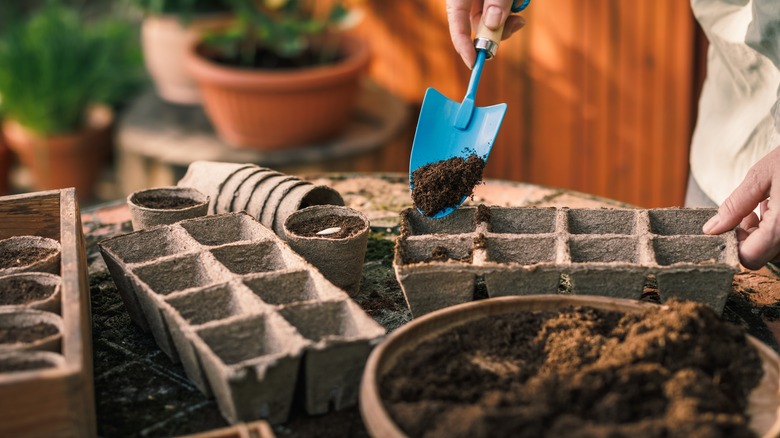The Coconut Coir Hack That Helps You Know When To Water Seedlings
We may receive a commission on purchases made from links.
So hopeful are your little seedlings as they wait to graduate to the outdoors and contribute to your garden's workforce. With all the work that goes into starting seeds indoors, you'll want to do whatever you can to get them to adulthood without major problems. Overwatering is a way we give "too much love" to our plants, and seedlings are especially susceptible. Fortunately, coconut coir can lend both you and your seedlings a hand. A thin layer of this helpful material over top of your planted seeds will give you a visual cue for when you need to get out your watering can. When you see that it has turned a lighter color, you'll know it's time for your trays to have a good drink.
There's mistake after mistake you can make when starting seedlings indoors, so don't let overwatering be one of them! Too much water along with not enough light can lead to damping off, a disease that infects seedlings as well as fully-grown plants through cool, overly-moist soil that's infected with fungi. Seedlings stricken with this fungi usually don't develop into mature plants. No matter how many tricks you may try to make sure you never overwater your plants again, it can still happen. Don't let overzealous watering claim your seedlings when a simple addition to your plant trays can serve as a green light that they actually need more moisture.
Coconut coir topping as a moisture gauge
When you're ready to give the growing season a head-start, grab your seeds, some potting coconut coir, and enough seed trays to accommodate all the seedlings you plan on starting. If you don't already have coconut coir, you can purchase a compressed block that expands to 15 gallons on Amazon for about $20. Using fresh potting soil is also essential for avoiding contamination that will put an early end to your seedlings. Try this DIY potting soil recipe that can save you money and give you a green thumb.
Fill your trays with clean potting soil mix, push a hole in the center of each, and plant your seeds at the depth that's best for each kind of plant. Lightly tamp down the soil in each cell so that you have about 1 inch between the top of the soil and the rim of each cell. Top each cell with ½ to 1 inch of coconut coir, and give the lot a thorough watering. Note the way the coir looks when it's wet versus when it's dry; the lighter the color, the less moisture that's in the soil underneath. Keep an eye on your trays, and when you see the telltale lighter brown color that the coir turns, it's time to water your seedlings.

